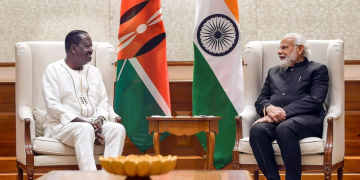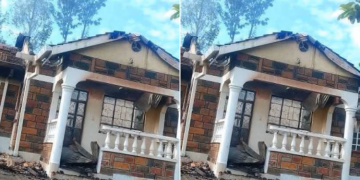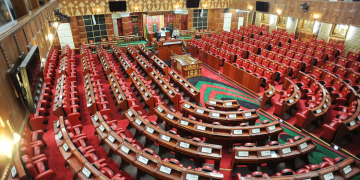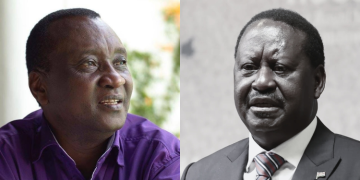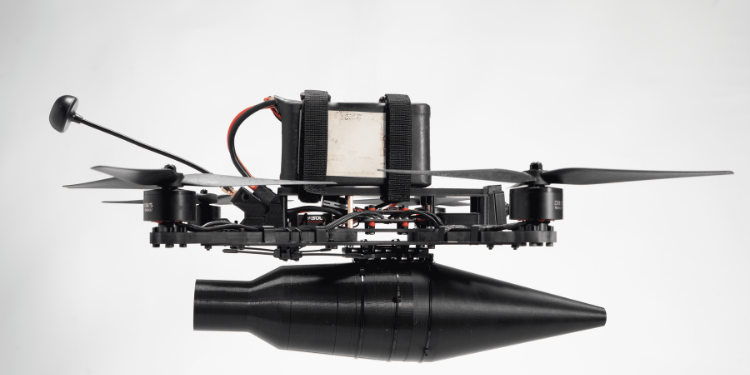The Fourth Law, a startup from Ukraine, is making headlines with its ambitious push to develop a fully autonomous TFL-1 autonomy module and Lupynis-10-TFL-1 drones by the end of 2025, powered by advanced AI systems.
Supported by Western investment from across the US, EU, and Canada, the Fourth Law is releasing new footage of the latest version of drone warfare.
“When we’re talking about full autonomy, I think we’re definitely going to see singular demos by the end of this year,” Yaroslav Azhnyuk, the Fourth Law’s founder and CEO, said.
Drone autonomy in Ukraine
The Fourth Law has revealed the battlefield use of its AI-powered TFL-1 autonomy module—an upgrade that enables frontline FPV drones to strike targets even under heavy electronic warfare independently.
Also Read: Trump’s Secret in Ukraine Arms Shipment Resumption
The TFL-1 modules enable drones to use neural nets for target identification, a critical feature in autonomous operations.
“We can actually identify a particular vehicle and track its boundaries and actually fly in the middle of that vehicle, as opposed to just trying to grab a group of pixels and then hope that that group of pixels, as we get closer and closer to the vehicle, will remain somewhere like in the center of it,” Azhnyuk said.
The technology’s versatility allows it to be integrated into various drone types, enhancing its battlefield utility.
Ukraine’s security notes that greater drone autonomy could help Ukraine operate in areas with Russian electronic warfare, addressing manpower disadvantages.
TFL outlines a five-stage roadmap toward full drone autonomy, ranging from terminal guidance and bombing to GPS-denied navigation, to fully autonomous takeoff, landing, and swarming capabilities.
These technologies, TFL says, will eventually enable autonomous interceptors, carriers, and even drone nests.
Industry Context
Ukraine’s drone industry has seen exponential growth since Russia’s full-scale invasion, with the country becoming one of the largest producers of drones in the Western-aligned world.
Forbes reported on March 12, 2025, that Ukraine’s production target for 2025 is 4.5 million drones, to further explain the scale of effort.
The Fourth Law maintains a lead in autonomous drone development, with reports suggesting Russia is about a year behind.
This competitive edge is driven by Ukraine’s large engineering workforce, one of the biggest in Europe, which facilitates close cooperation with frontline troops.
According to IEEE Spectrum, Ukraine’s per capita GDP of Ksh743,040 compared to the European average of Ksh 4.9 million allows for cost-effective, world-class defence tech production.
Broader Drone Ecosystem
The drone ecosystem extends beyond the Fourth Law, with other startups contributing to the field.
Kvertus, a Kyiv-based electronic-warfare company, emphasizes cost-effectiveness, noting that for $1 million, 10,000 drones equipped with four grenades each could potentially kill 1,000-2,000 people or destroy 200 tanks.
Huless, another Ukrainian startup, focuses on autonomous navigation, aiming for drones that can autonomously take off, fly, find targets, strike, and report back, believing autonomy will surpass Russian fibre-optic drones costing upwards from Ksh 64,500.
Also Read: Ukraine Devises New Way to Outsmart Putin and Destroy Ammunition Fields
Internationally, Auterion, a U.S. supplier, has seen its kamikaze drones with autonomous navigation destroy Russian tanks since July 2024, using terminal guidance systems that orient via known landmarks.
They expect fully autonomous solutions by the end of 2025, including visual navigation, GPS jamming overcoming, and smart target recognition, where operators decide strike areas, but drones make final target decisions.
Impact on Conflict
TFL’s technology has already been deployed widely by the Ukrainian Defense Forces, including by units like the 58th Motorized Infantry Brigade, which has operated drones equipped with the TFL-1 system since March 2025.
“It helps us overcome electronic warfare, jamming, acquire, and strike targets in challenging conditions,” said Colonel Ruslan Shevchuk, the brigade’s commander. “Our operational experience confirms it as a truly effective system.”
Drones account for 70% of deaths and injuries in the conflict, with Ukraine losing about 10,000 drones per month, mostly due to jamming, as per IEEE Spectrum.
Bloomberg on June 3, 2025, noted that Ukraine’s drone arsenal, costing as little as Ksh51,600 apiece, has neutralized sophisticated Russian equipment worth thousands of times more, reshaping modern warfare.
This has prompted global military recalibrations, with Taiwan, Israel, and European governments prioritizing drone investments, and the U.S. Pentagon looking to buy cheaper mass-produced drones from startups.
Follow our WhatsApp Channel and X Account for real-time news updates.



